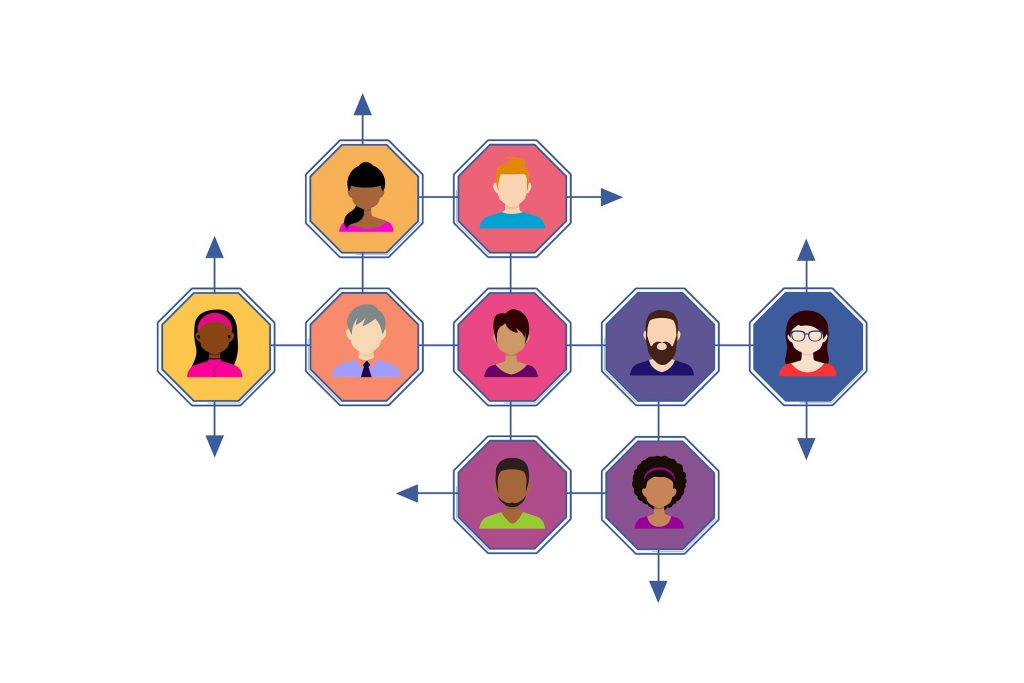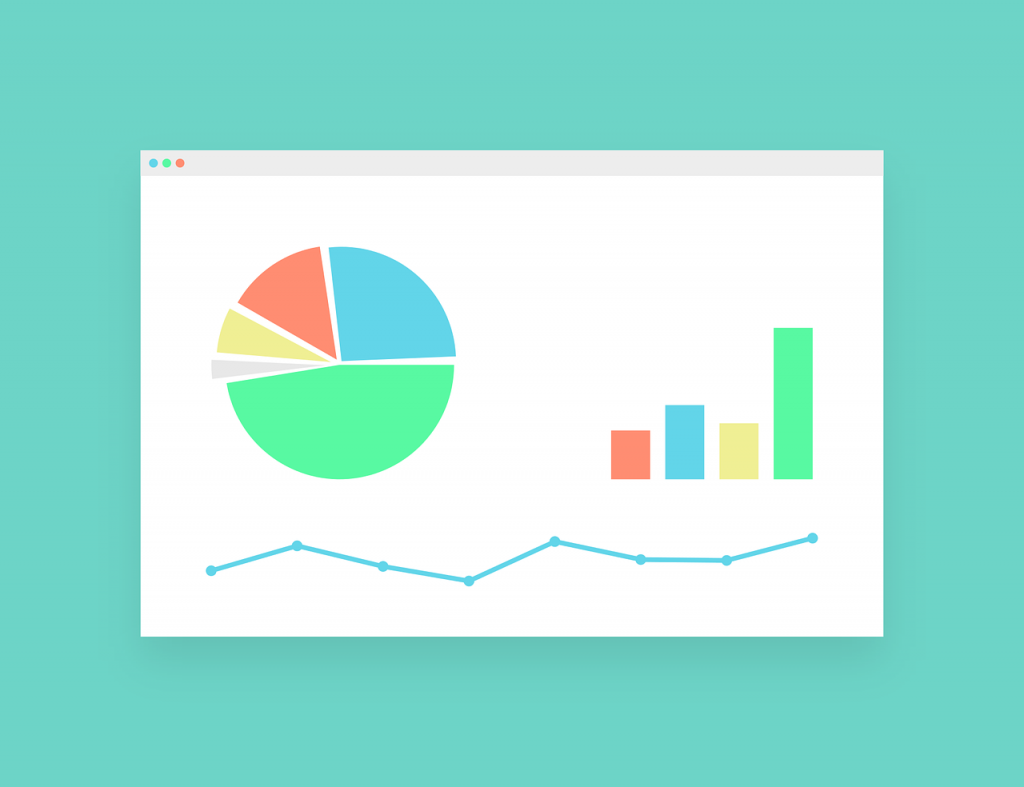Having a social media presence and producing good content is important, but just as important is analyzing your social media metrics and knowing which metrics are more or less important.
After defining your personas, deciding which social networks you will be on, creating content tailored to your brand, the next step is to define how you will measure your social media performance.
You have to define which metrics you’re going to evaluate and understand which ones are more important to the algorithm, and those should also be given more weight in your analysis.
First let’s recall some of the objectives of our Social Media presence:
- Relationship or Engagement
- Visibility
- Notoriety
- Leads or Opportunities
- Conversions or Sales

Companies that periodically track the outcome of their strategy can easily adjust their content and actions for better results. This monitoring allows them to know exactly what is working, what needs more attention or reformulation.
Metrics are thus an essential tool in social media management, allowing you to measure performance and set a minimum standard to be achieved.
If these numbers show that our actions are having a good result this means that we are on the right track in our strategy.
But not all Social Networks are the same, although almost all of them allow you to use the global functionalities of posting text, photos, video, comments… they are different!
The difference between Social Networks is in their focus and purpose.
So we have social networks with a greater focus on relationships, others for entertainment, the professional ones, and the niche ones. The important thing is to understand their dynamics and understand how our brand can fit into these dynamics, as far as the shared content is concerned.
And of course, the key to successful content is that with useful and relevant information for our audience.
But for all of these the monitoring phase is key. Whether through the analysis of metrics that allow us to have a broader view of the result of our content and campaigns, or also by analyzing the actions, reactions and comments of our followers.
Although they have the same purpose of analyzing results, metrics are different from KPI’s (Key Performance Indicators). Metrics are the values we use to evaluate our KPI’s. Performance indicators or KPI’s, in general are composed from several metrics or built around one metric and tend to respond to business purposes or the defined strategy. Metrics are simpler, direct and objective.

The performance of our metrics is also a key element for the Social Networking algorithm, although they don’t all have the same importance.
This algorithm is very similar to the one used by Google in its search functionality, much talked about within SEO (Search Engine Optimization) and in the way it makes content available, listing it in order of importance.
So what are the essential metrics in Social Media Management?
Clicks
One of the essential metrics in Social Media Management is Clicks. And about this metric, we should consider the following:
- a high number of clicks on content, but few likes and shares may indicate that the post got attention, but failed to build rapport with the audience;
- a post with a high level of relationship, but few clicks may indicate that the content used was not appealing enough to the point of wanting to know more about the subject.
Likes or Reactions
Likes and Reactions (in the case of Facebook) are also one of the metrics to evaluate, although not the most valued by the algorithm.
The more Likes a post has, the more interest it tends to generate, since it is interpreted as more popular content, or of greater interest.
This metric is considered low engagement, because it is a passive action. Therefore, a like is not one of the most valued metrics by social media algorithms.
But even if likes are not one of the most important metrics for the algorithm, we all like to get a lot of likes on our publications, don’t we?

Comments
The reason to be on Social Media is to be a social brand and comments are a metric to measure that.
A comment is a high engagement action, the effort a user makes to comment on your post, is greater than leaving a like on it.
Interesting and relevant content has a higher probability of generating a conversation. Having comments on published content is usually a great sign that our content is getting attention and interest.
And of course, always respond to comments from your followers to nurture the relationship with them.
Shares
Shares are even more important than the metrics above.
When someone shares our publication, this action is like a very personal recommendation of the content involved. For this reason, shares are a great indicator of the quality of our content both for our audience and for the Social Network algorithm.
Saved
This metric is not available on all social networks, but it is one of the most important when it exists, because it is the one that involves the most engagement.
On Instagram it is possible to save posts and the algorithm of this social network considers this action the most important. And why? Because when a user saves his content it means that he wants to consume that same content again.
A content that is saved is often a content that is highly valued by your audience.
Mentions
Why should you evaluate the number of times your brand is mentioned? Because it means that your brand is being remembered, even if you are not participating in a conversation. It is a way to validate the awareness of your company.
Profile visits
Not all social networks give relevance to this metric, but it exists and deserves attention. After all our presence in Social Networks is also meant to allow those who search for us in the Social Network to find us and know who we are.
This is a metric that may not present very high values, as many of our followers have never visited our profile. But for those who search for a solution like yours or viewed your content in their feed, if they want to know more about the brand they will definitely visit your profile.
Number of Followers or Fans

Obviously not all followers become active followers of our content, but the larger the potential audience we communicate to, the more likely we are to deliver our message to a larger audience.
It is true that having many followers will not necessarily mean an increase in your sales, but if you manage to gain many followers and produce good content that arouses in those followers the desire to buy your products, you can achieve good results.
Therefore, it is important to frequently analyze how many new followers you have gained.
Impressions
The number of impressions of content indicates how many times a post has been shown or displayed in someone’s feed.
While this does not indicate that the content has actually been viewed, it is an essential metric. The likelihood of being seen is the first part of the challenge in creating content for Social Media, the bigger the better!
It is important to know that each time your content is displayed in the feed an impression is counted. In other words, if your content appears 2 times to the same user 2 impressions are counted.
Reach
If the number of impressions is the potential number of times people can see our content, the reach is the exact number of people who actually saw it.
Reach is thus a way to measure how our content is being made available on Social Media. Unfortunately not all of our followers view our content, here the algorithm of each Social Network is in command, but the reach is a way to measure our effective audience.
Therefore, if the same user views the same publication twice, it is only counted 1 time in this metric.
What about the metrics to evaluate in Stories?
Stories are a content format increasingly appreciated by consumers and many social networks have adopted Stories.
But how do you evaluate the success of your stories and see if they need to be improved?
Besides being important to evaluate the impressions, reach and visitors to your profile achieved in your stories, there are 4 other metrics that you should analyze very carefully.
Responses
This is the most engaging metric in stories. When a user replies to your story they are engaged with its content and may even want to know more about it.
Therefore, having many replies to your stories means that you are managing to engage your followers with content shared there.
Backtracking
A touch back means that the user has gone back to see the content of your previous story.
Thus, analyzing the backtouches allows you to understand what types of content your audience wants to see again, which arouse the most interest.
When a user goes back to see your content again, it is because it is relevant to the user in the first place.
Forward Tapping
The number of touches forward represents the number of times the user has abandoned that story, having moved on to the next story from your account or from another user’s account.
This metric can be evaluated in two different ways:
- the user has already consumed the content and therefore moved on to the next story;
- the content didn’t spark the user’s interest, so they moved on to another story.
Exits
When the user leaves the story your brand posted and returns to the social network feed, it corresponds to an exit.
A high number of exits forces you to revise the content, especially when this number comes coupled with a high number of forward taps.
Ready to evaluate your social media metrics?
Of course there are more, but these are the essential metrics to use when defining your KPI’s to track your brand’s performance on Social Media.
Now that we know the main Social Media metrics, it’s time to look at them, understand and analyze the evolution of each one.
To do this you can facilitate your work using tools like Swonkie, which offers a specific area with very complete Performance Reports that can be exported in PDF, PowerPoint or Csv.
In addition to Facebook and Instagram reports, you will also find reports from LinkedIn, Twitter, Google My Business, Youtube and reports from your campaigns.
All our reports are customizable, exportable, shareable and ready in seconds. You can log into Swonkie, put your brand or your client’s brand logo on it, choose the metrics you want to deliver to the client, and your report is ready. And the best part is that the client doesn’t even have to know that the report was created in Swonkie.

Experience this and other features today at Swonkie.

